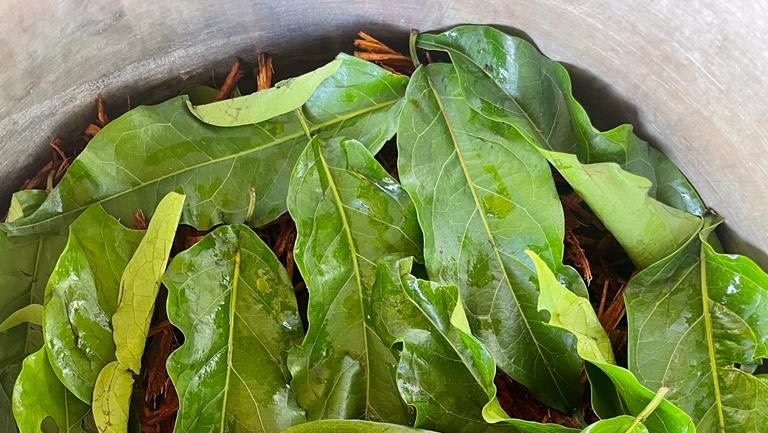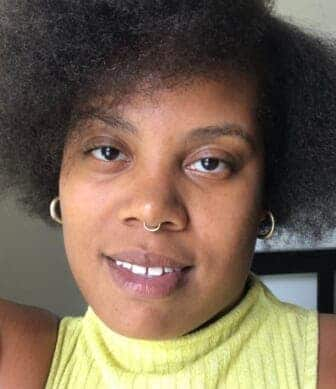Jada and Will experienced ayahuasca as a family. Are they onto something?
As Jada Pinkett Smith’s memoir brings ayahuasca into the chat, the owners of a Black-owned Ecuadorian retreat discuss the benefits of doing it with loved ones.
Early in Jada Pinkett Smith’s buzzworthy new memoir, “Worthy,” she paints a picture of what it was like to endure one of the most depressive periods of her life in 2012, soon after her 40th birthday. The actress revealed that, while in the depths of despair and contemplating suicide, ayahuasca helped pull her out of the darkness.
After being introduced to the idea by son Jaden, Pinkett Smith said the plant medicine (or psychedelic, as many consider it) gave her a “new deep willingness to live” and resulted in “a whole new world of healing,” not just for her but her immediate family. According to her memoir, the Smith family, including Will and their three children — Jaden, Willow, and Will’s firstborn son Trey — have participated in “journeys” together. While they are far from the first celebrities to openly discuss their adventures with “Mother Aya,” the Smiths are among the first to tout the psychedelic tea, legal mainly in countries throughout South America, as fun for the whole family.

Jhoselyn Gaddy, co-owner of the Ecuador-based La Vida Divine Healing Institute, said she thinks what the Smiths did is “beautiful.”
“Seeing what they’re doing, coming together, and how they’re utilizing different [healing] methods — because everybody’s not going to heal in a church or in a synagogue,” she said. “Some people are literally going to go to the jungle, and that’s where it can happen for them.”
She added, “I’m glad that they are being vocal about it and telling how it helped them and can help other people.”
Jhoselyn, an Ecuador native, took over the La Vida Divine Healing Institute in 2020 with her wife, Courtney Gaddy (who goes by her last name); together, they have been hosting plant medicine retreats specifically geared toward people of color. As more and more people of color turn to plant medicine and other ancient spiritual practices, the pair sat down with theGrio to discuss ayahuasca, plant medicine, and its potential for groundbreaking healing.
Below, with the help of Gaddy and Jhoselyn, we break down the ayahuasca, its potential benefits for people of color, and more.

What is ayahuasca?
Gaddy and Jhoselyn describe ayahuasca as a plant medicine, made when two ingredients (Banisteriopsis caapi vine and the hallucinogenic plant Psychotria viridis) are combined to form a tea, often described as tasting similar to licorice (though Pinkett Smith described the brew as foul-tasting). Consuming the tea is intended to induce a psychedelic experience often felt throughout the body that can result in epic emotional reckoning. The plants come from a vine native to the Amazonian regions of the world. Using ayahuasca for plant medicine is legal in countries primarily located in South America, including Brazil, Peru, Mexico, and Ecuador.
“It’s an ancestral medicine, meaning that it has been used for millennia, thousands of years,” Jhoselyn said.
She further explained that ayahuasca is known as a “Master Teacher” plant.
“That means that they’re also here to teach us about different ways of seeing ourselves, healing ourselves, but also teaching us about how to make better choices as a community and as a society. Plants have been here way longer than we have been and probably longer than we will be,” she said.
How does it work?
Gaddy explained that no two people will have the same experience during a “ceremony,” as the ritual of consuming ayahuasca is called.
“Everyone’s experience is so unique to their own body and spirit and emotional needs,” she said.
Over the course of six, eight, or even 10 days, an individual will consume between one and three cups of the brew. The effects, which take roughly 30 minutes to an hour to kick in, can be intense. Practitioners can experience hallucinations or visions, hearing voices or messages, communing with ancestors or other spirits, including animals — for Pinkett Smith, it was a black panther — and ultimately, intense emotional reckoning.
According to Jhoselyn, there is a “purging effect” as well. While visions of ancestors and meeting animal spirit gods aren’t guaranteed for everyone, almost everyone experiences some type of physical purging. Engaging in the ayahuasca ritual may cause one to vomit, shake, sweat, cry, or make other emotional utterances, such as laughing. In addition to the purge, Jhoselyn said most will also experience an internal dialogue.
However, there are some cases, she said, where a person will seem very “stoic” and calm. Meanwhile, internally, they are working through a lot.
“For the most part, people do have some somewhat of an experience, whether it’s physical, whether it’s mental, whether it’s visual, emotional, or otherwise,” she said.
Who should do ayahuasca, and who shouldn’t?
Both Jhoselyn and Gaddy stressed that ayahuasca isn’t for everyone. While it is a natural substance, serious health risks must be considered. Those with preexisting conditions of the heart, liver, kidneys, pancreas, or certain mental conditions should disclose those diagnoses before attempting a journey. Not every condition automatically rules a person out, but being upfront can help one make an informed decision before diving in. At Jhoselyn and Gaddy’s retreat, Jhoselyn’s background as a trained nurse helps her better guide ceremony participants.
Beyond physical and mental conditions, there’s also the condition of the spirit to consider.
“I think that only those who want to see themselves should actually come and do ayahuasca because it is like Pandora’s box. You can’t unsee it. You can’t unhear it,” said Jhoselyn.
What are the benefits for people of color?
Gaddy, who is originally from Baltimore, said depending on the experience, ayahuasca can be restorative for people of color. She noted that when a Black person goes to a white-hosted retreat, they may feel disconnected from the experience. Meanwhile, at retreats like La Vida Divine, people of color who need to work through racial trauma are in a safe space with guides who have firsthand knowledge of what they’re going through.
Jhoselyn noted that La Vida Divine infuses the experiences of people of color in their practice in a variety of ways, including through food and music. Gaddy also said the institute, which offers more than one type of plant medicine experience, can help Black people release certain traumas associated with being Black by also reframing relationships with plants that can be triggering.
Specifically, the institute has a section honoring different ancestral plants like cotton and tobacco.
“Coming from the States, anytime I saw cotton, naturally, I got angry,” Gaddy recalled. However, after re-experiencing the plant in a non-violent setting with the choice to interact with it or not, her views of cotton changed dramatically.
“It’s no longer painful for me because cotton is a sign of wealth. It’s a representation of so many different things, and we can change the story and how we look at stuff,” she explained.
“You can heal through different methods because it’s not just in the cup [of ayahuasca],” she added.
What are the benefits of doing ayahuasca with others?
One thing Jhoselyn said many do not consider before trying ayahuasca is the aftermath. Considering how mind-altering and healing the experience can be, many might return to their everyday lives shell-shocked — and surrounded by people still operating through their pain. It can be difficult to navigate relationships with those who haven’t had the experience, and some can fall back into old habits. Accordingly, the La Vida Divine Institute offers support not just during the retreat but also after practitioners have returned home.
This, however, is why Jhoselyn and Gaddy praise the Smith family for exploring ayahuasca both individually and together. Experiencing ayahuasca as a unit can allow for an even deeper level of healing and connection — and set everyone up for success afterward. Jhoselyn noted how no one knows us like our family units, who were there when certain instances of trauma may have developed. By taking the journey together, family members can address any pain that arises in the moment together, rather than one person doing all of the work by themselves.
After all, she said, “Nobody knows you like your brother, or like your sister, or like your auntie.”
Including family can ultimately make the work easier, and for many, there is much work to be done. Jhoselyn said ultimately, ayahuasca connects us back to the Earth and nature. It reminds us that we are actually of nature.
“If we are able to understand that nature is us, then a shift in how we are creating the world may actually happen,” she said. “Because I know for the majority of us, what we see right now reflected is a lot of what’s going on inside. It’s a lot of turmoil, chaos, sadness, fear, scarcity, all of that illness,” she continued. “We’re seeing it reflected in nature because that’s who we are. And so if we want to heal what we see, we have to heal what we are.”
Editor’s note: Neither Jada Pinkett Smith’s memoir nor theGrio encourage the use of ayahuasca as a treatment for depression or a substitute for medical intervention. Those interested in exploring ayahuasca should thoroughly research, including speaking with medical professionals if needed.
If you or someone close to you is contemplating self-harm, please contact SAMHSA’s National Helpline, 1-800-662-HELP (4357) or TTY: 1-800-487-4889 for free and confidential information and support, 24-hours a day.

Kay Wicker is a lifestyle writer for theGrio covering health, wellness, travel, beauty, fashion, and the myriad ways Black people live and enjoy their lives. She has previously created content for magazines, newspapers, and digital brands.
TheGrio is FREE on your TV via Apple TV, Amazon Fire, Roku, and Android TV. TheGrio’s Black Podcast Network is free too. Download theGrio mobile apps today! Listen to ‘Writing Black’ with Maiysha Kai.


